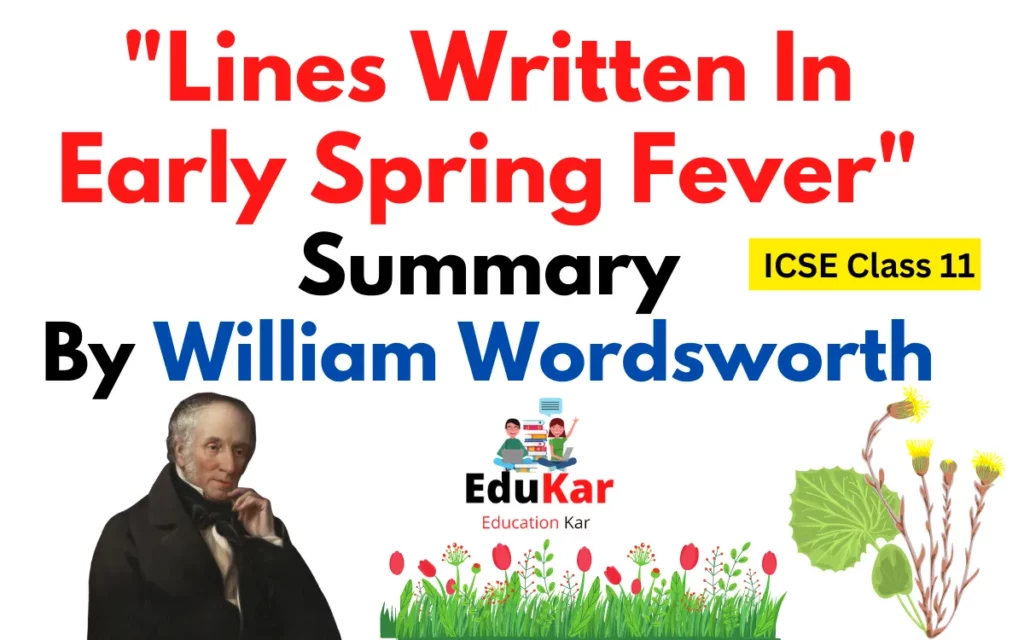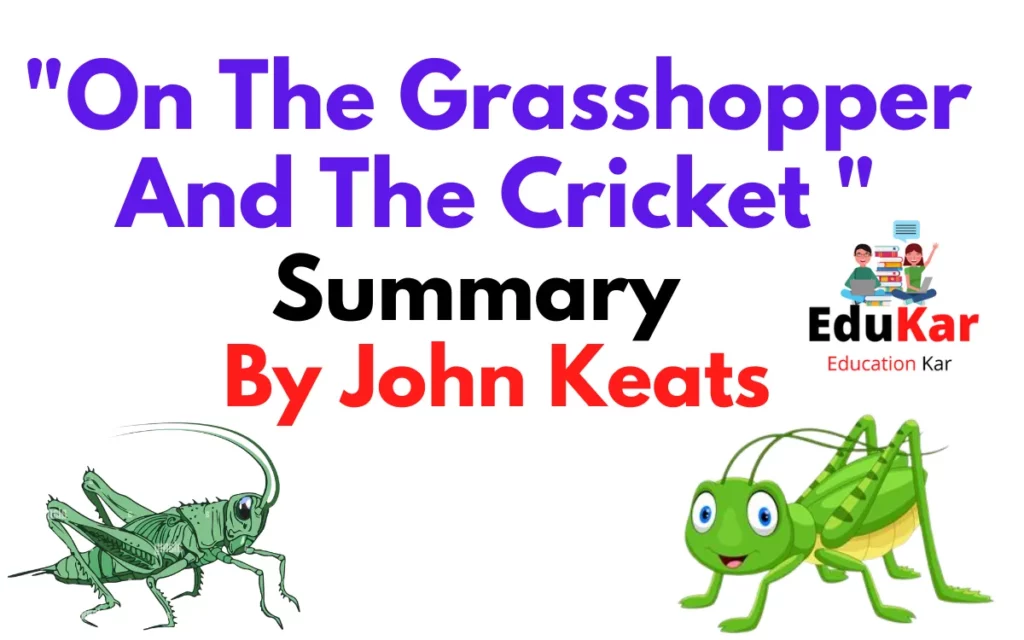Contents
Explore the beauty and transience of life in “Ode To Autumn” by John Keats. This contemplative poem reflects on the changing of the seasons, specifically autumn, and the central message of appreciating and making the most of life. Read a summary of this beloved English Romantic poem.”
| Name | Ode To Autumn |
| Subject | English |
| Type | Poem |
| Author | John Keats |

Introduction
“Ode to Autumn” is a poem written by John Keats in 1819. It is considered one of his greatest works and is a celebration of the season of autumn. The poem uses vivid imagery and personification to evoke a sense of peace and contentment, while also reflecting on the transience of life and the inevitability of change. This classic piece of Romantic literature remains one of the most famous poems in the English language.
English Summary – “Ode To Autumn”
“Ode to Autumn” is a beautiful poem by the English Romantic poet John Keats, written in 1819. It is considered one of his greatest works and is widely recognized as one of the most famous poems in the English language. This ode is a celebration of the season of autumn and is an example of Keats’ ability to use vivid, sensory images to evoke a sense of place and time.
The poem begins by personifying autumn as a time of mellow fruitfulness. Keats describes the season as having a warm, comforting presence and as being a time of plenty, with fields and orchards ripe with fruit and crops. He describes the way in which the autumn sun shines, casting a warm glow over the land and painting everything with a golden light.
As the poem progresses, Keats describes the way in which autumn is a time of transition and change. The leaves on the trees are turning brown and falling to the ground, and the weather is becoming cooler and more windy. Keats reflects on the transience of life and the inevitability of change, suggesting that autumn is a reminder of the cycle of life and death. He describes how the season is a time of rest for the earth, and how it prepares for the winter ahead.
In the next stanza, Keats uses a series of images to evoke a sense of peace and contentment. He describes how the “soft-dying day” casts a warm, soft light, and how the birds are singing sweet melodies in the trees. He speaks of the way in which the sun sets in the sky, painting the world in shades of orange and red, and how the stars twinkle in the night sky. Keats suggests that the beauty of autumn is a reminder of the beauty of life and the world around us.
In the final stanza, Keats reflects on the cyclical nature of life and how autumn is a time of both ending and beginning. He describes the way in which the earth and the plants will slowly go to sleep, only to awaken again in the spring. He speaks of the way in which the cycle of life and death continues, and how it is a reminder of the continuity of existence.
The final lines of the poem are some of Keats’ most famous, and are a reflection on the beauty of the world and the transience of life. Keats writes:
“Season of mists and mellow fruitfulness!
Close bosom-friend of the maturing sun;
Conspiring with him how to load and bless
With fruit the vines that round the thatch-eaves run;
To bend with apples the moss’d cottage-trees,
And fill all fruit with ripeness to the core;
To husband out of the thrifty year
Their hoard; and, of all its teeming stores,
Nothing beside remains: round the decay
Of that colossal wreck, boundless and bare
The lone and level sands stretch far away.”
In these lines, Keats reflects on the beauty of autumn and the way in which it is a time of abundance and growth, but also a time of decay and destruction. He suggests that, like all things in life, autumn is finite and will eventually come to an end, leaving behind nothing but emptiness and the memory of its beauty.
About The Author
John Keats was an English Romantic poet born in 1795. He is considered one of the greatest poets of the Romantic era and is known for his use of vivid, sensory imagery and his exploration of themes such as beauty, love, and death. Keats’ poems, including “Ode to a Nightingale” and “Ode to Autumn,” have become classics of English literature and are widely studied and appreciated to this day. Despite his short life and limited output, Keats’ legacy endures as one of the most important poets of the Romantic era.
Conclusion – “Ode To Autumn”
In conclusion, “Ode to Autumn” by John Keats is a timeless celebration of the beauty of the season of autumn. Through his vivid imagery and personification, Keats evokes a sense of peace and contentment, while also reflecting on the transience of life and the inevitability of change. This classic piece of Romantic literature remains one of the most famous poems in the English language and continues to be widely studied and appreciated for its beauty and meaning. Keats’ legacy endures as one of the greatest poets of the Romantic era, and “Ode to Autumn” stands as a testament to his skill and imagination.
FAQs:
What is “Ode To Autumn”?
“Ode To Autumn” is a poem written by the English Romantic poet John Keats. It was composed in September 1819 and published in 1820.
What is the subject of “Ode To Autumn”?
The subject of “Ode To Autumn” is the changing of the seasons, specifically the autumn season. The poem reflects on the beauty and harvest of autumn and the passing of time.
What is the tone of “Ode To Autumn”?
The tone of “Ode To Autumn” is contemplative and melancholic. Keats reflects on the beauty and transience of life through the changing of the seasons.
What is the central message of “Ode To Autumn”?
The central message of “Ode To Autumn” is the beauty and transience of life. Keats celebrates the abundance of autumn, but also acknowledges that it represents the approach of winter and the end of the growing season. This serves as a reminder that all things must come to an end, and that we should appreciate and make the most of life while we can.
What literary devices are used in “Ode To Autumn”?
“Ode To Autumn” employs a variety of literary devices, including imagery, personification, and alliteration. Keats uses vivid imagery to describe the sights, sounds, and sensations of autumn, and personifies autumn as a bountiful and tranquil season. Additionally, the repetition of certain sounds and the use of alliteration add musicality to the poem.















